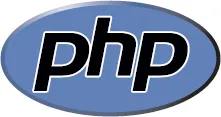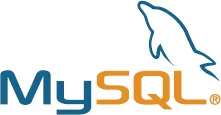
- English
- ePUB (mobile friendly)
- Available on iOS & Android
About this book
PHP and MySQL in easy steps, 2nd edition teaches the user to write PHP server-side scripts and how to make MySQL database queries. It has an easy-to-follow style that will appeal to:
- anyone who wants to begin producing data-driven web pages.
- web developers wanting to add database interaction to their web sites.
- the programmer who quickly wants to add PHP and MySQL to their skills set.
- the hobbyist who wants to begin creating scripts for upload to their own ISP.
- the student, and to those seeking a career in computing, who need a fundamental understanding of server-side programming with PHP and MySQL.
PHP and MySQL in easy steps, 2nd edition demonstrates by example how to produce data-driven web pages using the powerful PHP scripting language and the popular free MySQL database server. The book examples provide clear syntax-highlighted code showing how to selectively insert and extract data from databases for presentation on your web browser.
PHP and MySQL in easy steps, 2nd edition begins by explaining how to install a free web server, the PHP interpreter, and MySQL database server, to create an environment in which you can produce your very own data-driven server-side web pages. You will learn how to write PHP server-side scripts and how to make MySQL database queries. Examples illustrate how to store and retrieve Session Data, how to provide a Message Board, and how to create an E-Commerce Shopping Cart.
This book assumes you have no previous experience of any programming or scripting language so is ideal for the newcomer to PHP and MySQL technologies.
Covers MySQL 8.0.
Contents
- Getting started
- Performing operations
- Controlling progress
- Producing forms
- Assembling tables
- Handling data
- Connecting databases
- Registering users
- Providing forums
- Processing shops
Frequently asked questions
- Essential is ideal for learners and professionals who enjoy exploring a wide range of subjects. Access the Essential Library with 800,000+ trusted titles and best-sellers across business, personal growth, and the humanities. Includes unlimited reading time and Standard Read Aloud voice.
- Complete: Perfect for advanced learners and researchers needing full, unrestricted access. Unlock 1.4M+ books across hundreds of subjects, including academic and specialized titles. The Complete Plan also includes advanced features like Premium Read Aloud and Research Assistant.
Please note we cannot support devices running on iOS 13 and Android 7 or earlier. Learn more about using the app.
Information


Table of contents
- Cover
- Title
- Copyright
- Contents
- Preface
- 1 Getting started
- 2 Performing operations
- 3 Controlling progress
- 4 Producing forms
- 5 Assembling tables
- 6 Handling data
- 7 Connecting databases
- 8 Registering users
- 9 Providing forums
- 10 Processing shops
- Back Cover